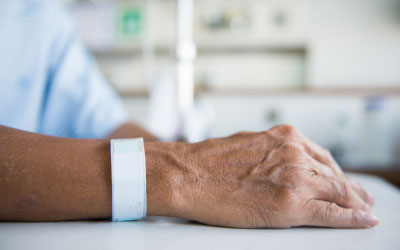Radiation Therapy for Leukemia
Radiation therapy uses high doses of radiation (a type of energy) to ease pain caused by an enlarged spleen or metastatic leukemia that spreads to bones or organs. Also called radiotherapy, this treatment may also take place before a stem cell transplant. It gets rid of leukemia cells to make room for healthy stem cells.
How does radiation therapy treat leukemia?
Radiation damages the genetic makeup (DNA) of leukemia cells, preventing the cells from multiplying and growing. Radiation therapy is a highly effective leukemia treatment option for adults. Doctors also use radiation therapy to treat some types of childhood leukemia.
Medical doctors called radiation oncologists administer radiation therapy. This treatment can:
- Damage and destroy leukemia cells
- Ease bone pain
- Get rid of leukemia cells (conditioning treatment) in preparation for a stem cell transplant
- Shrink tumors or an enlarged liver, spleen, or lymph nodes that cause pain or other symptoms
- Treat leukemia that spreads (metastasizes) to other parts of the body, such as the brain, spinal fluid, or testicles
Who needs radiation therapy for leukemia?
When appropriate, radiation oncologists use radiation therapy to treat these types of leukemia:
What are the types of radiation therapy for leukemia?
When treating leukemia, radiation oncologists most commonly use one of these types of radiation therapy:
- External beam radiation therapy (EBRT)
- Radioimmunotherapy
External beam radiation therapy (EBRT)
A machine delivers high doses of photon or proton beams to targeted areas of the body. Proton beams are less scattered than photon beams, which helps minimize damage to surrounding healthy tissues and organs. External beam radiation therapy typically takes place five days a week for up to 10 weeks.
Radioimmunotherapy
Radioimmunotherapy combines radiation therapy with immunotherapy. People with leukemia receive an IV infusion of a monoclonal antibody drug. These lab-made proteins target and attach to specific substances inside or outside leukemia cells. A radioactive substance (isotope) that’s part of the drug enters the targeted leukemia cells, delivering radiation directly to the cells. The combined treatments damage and destroy diseased cells. Infusions take place over one to two weeks. Because monoclonal antibodies target cancer cells, they’re also a type of targeted therapy.
What are the side effects of radiation therapy for leukemia?
Radiation therapy can damage healthy cells, as well as cancerous ones. Side effects vary depending on the type of radiotherapy, dosage, and treatment area. Radioimmunotherapy is less toxic to healthy cells than external beam radiation therapy, so the side effects are less severe. Healthy cells often recover within a few months after treatment ends. Some people experience late side effects months or years after receiving radiation therapy. You can take steps to manage side effects.
Side effects of radiation therapy include:
- Difficulty swallowing
- Fatigue
- Headaches
- Hair loss
- Memory problems
- Nausea and vomiting
- Shortness of breath
- Skin irritation and burns that can cause radiation dermatitis (dry, flaky, itchy skin)
Treatment resources for you and your loved ones
Support can make a significant difference when you need leukemia treatments. Check out our directory of resources, including treatment-specific webinars, for patients, families, and caregivers.



